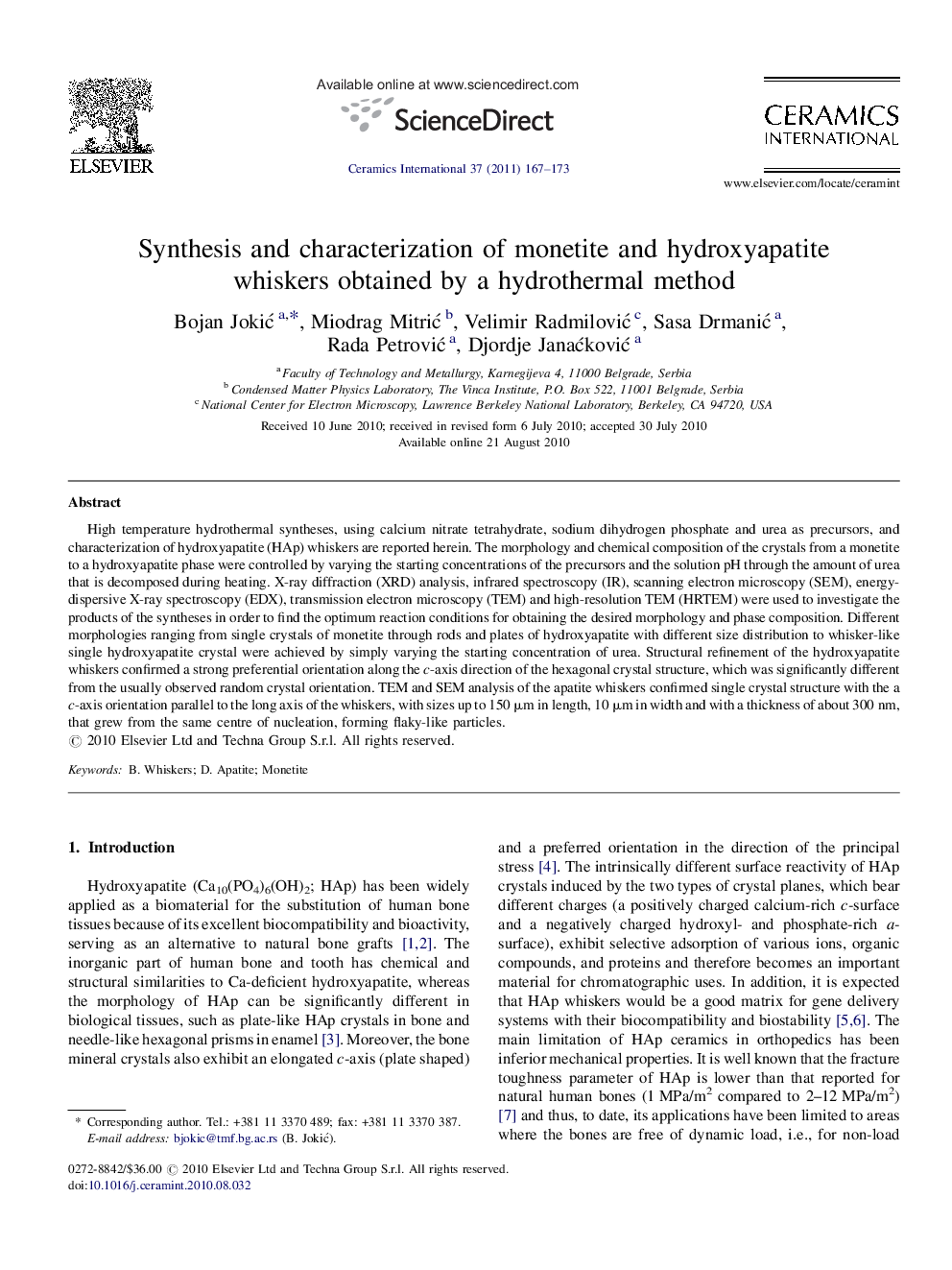| Article ID | Journal | Published Year | Pages | File Type |
|---|---|---|---|---|
| 1463978 | Ceramics International | 2011 | 7 Pages |
High temperature hydrothermal syntheses, using calcium nitrate tetrahydrate, sodium dihydrogen phosphate and urea as precursors, and characterization of hydroxyapatite (HAp) whiskers are reported herein. The morphology and chemical composition of the crystals from a monetite to a hydroxyapatite phase were controlled by varying the starting concentrations of the precursors and the solution pH through the amount of urea that is decomposed during heating. X-ray diffraction (XRD) analysis, infrared spectroscopy (IR), scanning electron microscopy (SEM), energy-dispersive X-ray spectroscopy (EDX), transmission electron microscopy (TEM) and high-resolution TEM (HRTEM) were used to investigate the products of the syntheses in order to find the optimum reaction conditions for obtaining the desired morphology and phase composition. Different morphologies ranging from single crystals of monetite through rods and plates of hydroxyapatite with different size distribution to whisker-like single hydroxyapatite crystal were achieved by simply varying the starting concentration of urea. Structural refinement of the hydroxyapatite whiskers confirmed a strong preferential orientation along the c-axis direction of the hexagonal crystal structure, which was significantly different from the usually observed random crystal orientation. TEM and SEM analysis of the apatite whiskers confirmed single crystal structure with the a c-axis orientation parallel to the long axis of the whiskers, with sizes up to 150 μm in length, 10 μm in width and with a thickness of about 300 nm, that grew from the same centre of nucleation, forming flaky-like particles.
